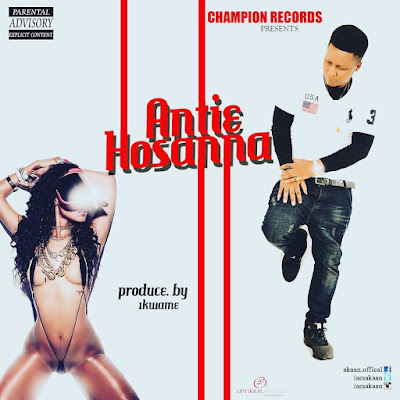No rapper quite commercialized hiplife in the late 90s and early 2000
like Lord Kenya. Obrafour is credited for his depth, Nananom, NFL,
Reggie Rockstone, Akyeame all as pioneers, and Buk-Bak for a modern
sleight, but the Sika Baa rapper (born Abraham Philip Akpor Kojo Kenya)
brought abundant traction to the movement, many would argue.
With a consistent offering of five records in as many years, he quickly
became your ultimate Ghanaian superstar –something like the modern-day
Shatta Wale.
Even now, several years after he has walked away from the celebrity of
music to take up the Lord’s work, his name is mentioned with reverence,
and songs he released about two decades ago still experience radio
presence like they were published recently. The lifespan of a modern
song usually doesn’t exceed a few months, and so the fact that his music
is present on our airwaves at all speaks volumes, especially when,
since becoming a pastor, he has constantly requested media houses to
stop playing his songs.
A story is told about how once, at a local radio station in Accra, he
was forced to perform from his car, because the thick crowd of admirers
that had gathered around him was simply impenetrable. Many other stories
abound about how his concerts were characterised by rowdiness, and
there was violent pushing and shoving for his clothes when he threw them
into the audience.
2002 is a momentous year not just for Kenya, but for the genre in
general. Really, until he swept four awards (including Artist of the
Year) in that edition of the Ghana Music Awards, hiplife was not
regarded with the same seriousness as, say, highlife. Controversial as
it may sound, him (a rap act) winning Artist of the Year legitimized
that type of music, and secured mainstream acceptance for the genre. He
truly opened the floodgates for other rappers, which is why perhaps 10
out of the 12 acts who have won Artist of the Year since him have been
hiplife people: Kontihene (2003), V.I.P (2004, 2011), Obour (2005), Kwaw
Kese (2008), Okyeame Kwame (2008), Sarkodie (2010, 2012), R2Bees
(2013), and EL (2016).
His style, like his concert, was fierce and reminded you of a certain
2Pac Shakur. Even his love songs were delivered with a fearless
demeanor. Again, like 2Pac, it was clear that he had so much to say in
painfully limited time. Still, within that short spate, he did a lot of
saying.
Every one of his performances was striking for some reason. You never
knew what to expect when you attended a Lord Kenya gig, and it gave you a
rush every time.
He was unstoppable. His voice was too husky to be any good at singing,
but he sang. His colleagues held on to new music to allow for old ones
to completely ebb, but he was constantly ready with a record. He flew
off stages and broke his leg, but he was back in a couple of months,
rousing thousands with renewed vigor.
Kenya truly led the pack with his stage presence, and raised the bar so
high that, even today, it still remains to be matched. Even in the
recording booth, veteran producer Zapp Mallet (who worked on a
significant amount of songs on his catalogue) once recounted in an
interview, Lord Kenya was something else.
And then suddenly, somewhere in 2004 his performances began to lose
fire. He would pick up the mic and forget his lines. He was constantly
fatigued, and there were occasions when his sets were simply abysmal. In
a tell-all interview with broadcaster Deloris Frimpong- Manso (Delay)
years later, he would confess to the use of a cocktail of illicit drugs
as the reason for the volatile feature of his craft. Stardom is a
dangerous thing.
He did make a return though, in 2006, with Born Again. Heavily themed on
sentiments of compunction, it chalked significant reception, and was
subtle notice of things to come as, soon after, he went into full-time
ministry.
Ye Sum Sika, the album with which he ascended GMA royalty rained
masterpieces: Mr. P.O.P, Enwom No, Mobrowa, Medo etc. It topped local
charts for 34 weeks straight.
Also picking 4 awards at GMA 2002 was (unsurprisingly) Daasebre
Gyamenah, who’s 1999 hit Kokooko was a major springboard for the rapper.
A dynamic duo, they proved what majestic art could erupt when the best
of both worlds united creatively. Kokooko is archetypical hiplife, and
is among the most important contributions to the genre till date.
Gyamenah passed last year, and Kenya caters for the Lord’s flock, but the Kenya era is no doubt a special moment in GMA history.
*This year’s edition of the Vodafone –sponsored Ghana Music Awards
comes off at the Accra International Conference Centre on Saturday April
8th. EL, Sarkodie, Stonebwoy, Joe Mettle, MzVee, Medikal are all in the
running for the coveted award of Artist of the Year.













































